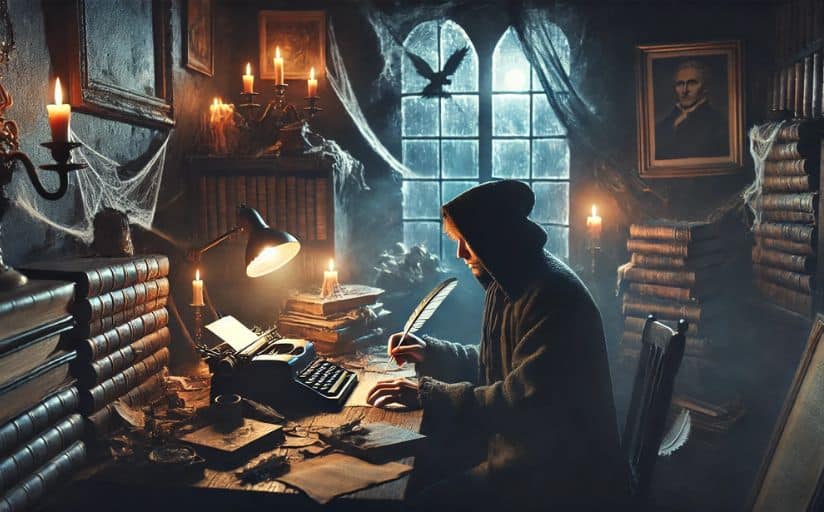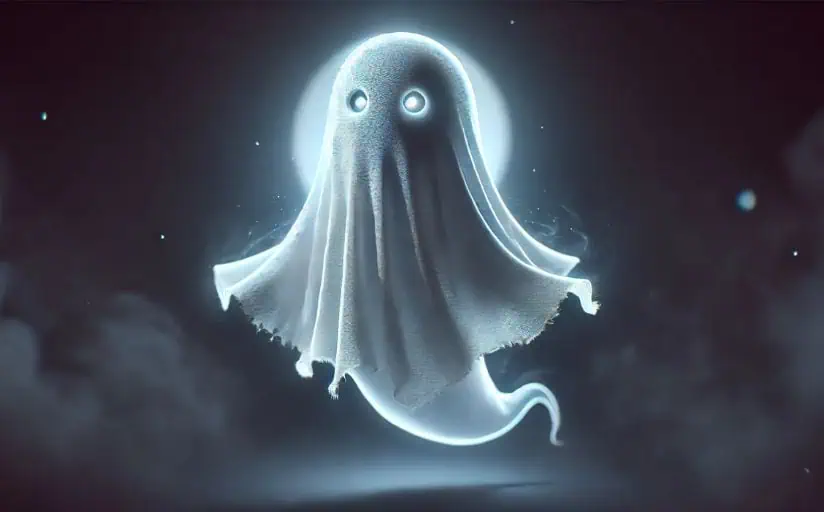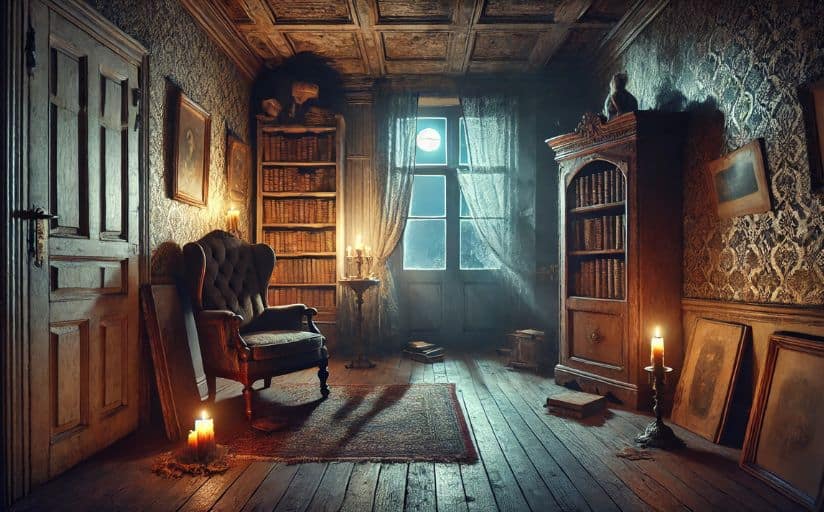All my friends know I do not think scaring the living daylights out of myself is fun. At all. Still, they gleefully drag me to horror movies and haunted houses and watch me suffer — you know, like friends do.
(If you make a purchase using the links in this post, we may earn a commission.)
However, I love a good ghost story, so long as it’s in a book and doesn’t involve someone startling me with an axe. While I’ve never written one, I think I might like to. I also think I might like to read yours, so here’s the lowdown on how to write a ghost story.

How To Write a Ghost Story: Structure and Tips
Knowing how to write a short horror story begins with understanding the general structure. You’ll also need a starting point, and there are a few elements you should include to develop your story.
How Do You Structure a Ghost Story?
Many (but not all) ghost tales follow this structure:
- The Set-Up: Set up the story’s telling and foreshadow what’s ahead.
- The Arrival: Begin the haunting by establishing the source or site.
- The Encounter: Tell about a moment of change or a point of no return.
- The Resolution: Describe the fate of the ghost and the protagonist.
- The History: Reveal the cause of the haunting.
As you write, consider using powerful and bold imagery that impacts your readers. Furthermore, don’t forget to include why your main character deserves to be haunted.

How Do You Start a Ghost Story?
Starting your ghost story requires a few determinations and some elements that will give your audience a solid base when they begin reading.
Decide the Fear Level
Identify your subgenre. Are you going for gory splatter value, or do you want disturbing psychological fear? Do you want your readers to be able to sleep at night?
Set the Tone
Display your storytelling, characterization, and writing style to set the mood.
Here are a few common moods often featured in scary ghost stories:
- Eerie/unsettling
- Claustrophobic
- Oppressive
- Surreal
- Isolated/lonely
- Gory
- Mysterious
- Suspenseful
- Psychologically Disturbing
- Hopeless
- Macabre
Give your audience a sense of your themes, and keep your tone consistent throughout.
Engage With a Captivating Hook
Descriptions, atmosphere, and imagery are all important when creating a hook in a ghost story. Bring in a relatable character immediately, avoid clichés, and don’t let one word go to waste.
Get To Know Your Protagonist
Your main character must be afraid of the story’s horrific elements. Develop your protagonist so that you can tell your audience why they’re scared and what will happen if the protagonist has to confront the scary thing.
Create Suspense
If you’re writing a monster into the story, show it early so that your audience knows to fear it. If not, keep the fear factor ambiguous but present, at least in the readers’ minds.
Finally, make sure you develop your ghost lore and be consistent with it. How and when do the ghosts appear? What do they look like? Where do they go, and how do they cross over again?

How To Write a Ghost Story: Spook Your Audience
Before I go with my friends to get lost in a corn maze, I’ll leave one last piece of advice on how to write a ghost story: If you know how to spook yourself, you’ll know how to spook your audience.
If you want to learn more about writing ghost stories, check out these great resources:
BUY – The Art of Fear: How to Write Scary Ghost Stories that Terrify Your Readers
BUY – The Making of a Story: A Norton Guide to Creative Writing
Drop some scary ghost story ideas in the comments below! And don’t forget to read through our discussion on figures of speech you can use to add color to your story!


Leave a Reply